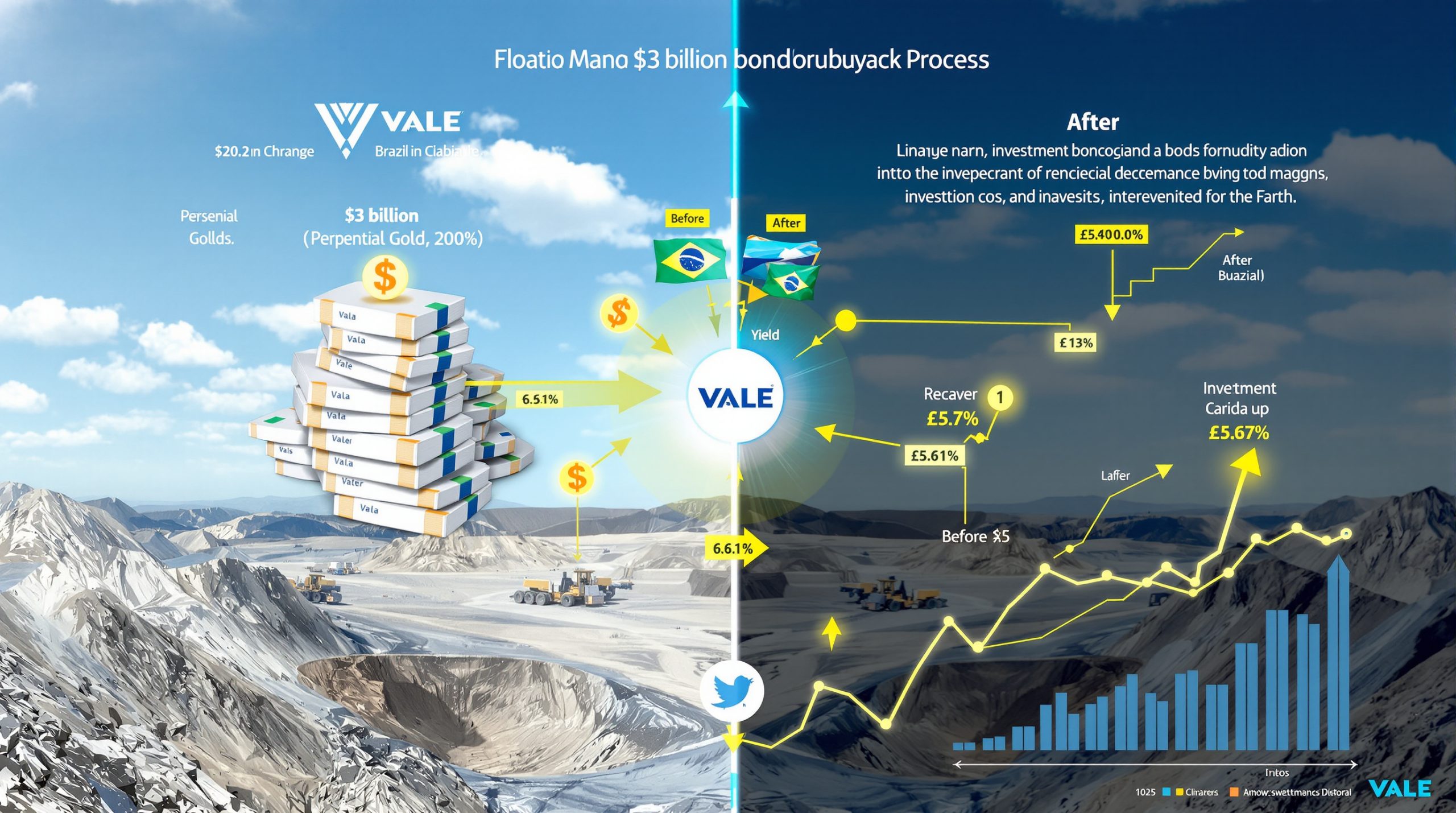How Do Market Crashes Really Affect Gold Prices?
Gold has long been considered a safe haven during times of economic uncertainty, yet its price movements during market crashes often puzzle investors. The relationship between market crashes and gold prices is complex and frequently misunderstood, involving multiple market forces that extend far beyond simple investor behavior.
When examining historical data, we find that gold doesn't always perform as expected during market turbulence. For example, in mid-June 2025, gold experienced a significant $150 per ounce drop from $3,450 to $3,300, despite heightened geopolitical tensions that should have supported safe-haven assets.
The Margin Call Misconception
When stock markets crash, gold sometimes experiences unexpected price declines. A common explanation suggests that investors sell gold positions to cover margin calls in other markets. However, this explanation has several logical flaws:
- Limited gold ownership: The percentage of investors who actually own physical gold is relatively small compared to those invested in equities
- Disproportionate price movements: The volume of gold that would need to be sold to cause significant price drops exceeds what typical investors hold
- Counterintuitive behavior: During true crises, physical gold demand typically increases rather than decreases
This disconnect points to more complex market mechanisms at work, as precious metals expert Andrew Maguire explains:
"Physical buyers never sell their gold versus paper gold traders who place high-leverage futures bets targeting cash settlement… The house market makers know exactly where speculators will be forced to sell."
Understanding this dynamic reveals how paper markets can temporarily override physical demand fundamentals during market crashes.
The Two Gold Markets: Physical vs. Paper
The gold market is effectively split into two separate but interconnected markets that operate under entirely different rules and mechanics.
Physical Gold Market Dynamics
The physical gold market operates on fundamentals that differ significantly from paper gold markets:
- Global fungibility: Physical gold maintains consistent value worldwide as a recognized monetary asset
- Limited supply: Each physical ounce purchased tightens available supply
- Normal price discovery: Higher demand naturally leads to higher prices through traditional supply-demand mechanics
- Central bank participation: National banks actively accumulate physical gold, creating persistent demand
- Basel III compliance: Physical allocated gold is classified as a Tier 1 high-quality liquid asset under banking regulations
Physical gold follows traditional supply and demand principles, with price increases naturally occurring when demand rises or supply tightens.
Paper Gold Market Mechanics
The paper gold market functions very differently:
- High leverage: Traders can control gold contracts worth hundreds of thousands of dollars with minimal capital (approximately 4% margin requirements)
- Synthetic creation: Unlike physical gold, paper contracts can be created without limit
- Cash settlement focus: Most futures contracts never result in physical delivery
- Casino-like environment: Market makers can see speculator positions and target price levels that trigger forced liquidations
- Limited transparency: Retail speculators have restricted visibility into wholesale market dynamics
This leverage means that with just $15,000, a trader can control approximately $340,000 worth of gold contracts—a dramatic amplification of market influence that physical buyers simply don't have.
The divergence between these two markets has grown increasingly apparent, with COMEX open interest declining by approximately 50% since its 2020 peak, while physical demand remains robust.
Price Suppression Mechanisms During Market Crashes
During market crashes, gold prices often behave counterintuitively, moving downward precisely when safe-haven demand should push them higher. This paradox reveals sophisticated market surge performance mechanisms at work.
Institutional Manipulation Tactics
During market crashes, several specific mechanisms affect gold prices:
- Coordinated selling: Major financial institutions can coordinate selling activity to drive prices down
- Producer hedging: Banks may encourage mining companies to hedge future production, creating additional selling pressure
- Options market targeting: Price suppression often targets specific price levels where options expire
- Counterintuitive timing: Gold selling frequently intensifies precisely when safe-haven demand should be strongest
- Divergent analyst forecasts: Some institutions publish bearish gold forecasts during crises while simultaneously accumulating physical positions
A prime example occurred in June 2025, when a significant silver price decline to exactly $35.20 coincided with the "sweet spot" for options expiration—a level that benefited major market makers at the expense of retail speculators.
The Office of the Comptroller Connection
A critical but rarely discussed factor involves derivative positions tracked by the Office of the Comptroller of the Currency (OCC):
- Unallocated gold positions: Major banks maintain significant derivative positions in unallocated gold
- Basel III non-compliance: These positions often don't meet Basel III regulatory requirements
- End-of-month settlement pressure: Banks frequently need to mark these positions to market at month-end
- Delayed reporting: OCC reports are published with significant delays, obscuring current market positioning
According to OCC data cited by Maguire, there were approximately $1.4 trillion in precious metals contracts reported in Q4 2024 (published in Q2 2025). These massive derivative positions create hidden pressures in the market, particularly during periods of financial stress.
"City and JP Morgan are primary agents for offside OCC FX bets… These non-Basel III positions face monthly mark-to-market pressure."
This reporting lag—with Q4 2024 data only published in Q2 2025—creates an information asymmetry that disadvantages retail investors.
Recent Example: The 2024 Gold Price Manipulation
The June 2025 gold price movement provides a textbook example of the complex relationship between market crashes and gold prices.
The Counterintuitive Selloff
This recent market action demonstrates these dynamics in action:
- Gold reached approximately $3,450 per ounce, driven by strong physical demand
- Despite heightened geopolitical tensions that should support safe-haven assets, gold suddenly experienced a $150 price drop
- This selling occurred against a backdrop of strong physical buying from central banks and Asian markets
- One major bank issued bearish price targets while most other institutions maintained bullish forecasts
What makes this price action particularly suspicious is the divergence between paper selling and physical demand—while futures prices declined, physical buying remained robust.
The Institutional Divide
This price action revealed a split among major financial institutions:
- Bearish positioning: Certain banks (notably Citigroup) issued public statements projecting gold prices as low as $2,500
- Bullish consensus: Most other major banks (including Goldman Sachs and UBS) maintained price targets of $3,700-$4,000
- Producer manipulation: Evidence suggested mining companies were encouraged to hedge future production at lower prices
- Physical accumulation: While paper prices declined, physical demand remained strong
As Maguire explained: "City tricked captive producers to hedge forward sales into 2026… This was unnecessary selling into physical demand."
This institutional divide is significant because it suggests that certain banks may have had positioning interests that benefited from lower gold prices, while the broader market consensus remained bullish.
The Shifting Balance of Power in Gold Markets
The traditional Western dominance of gold price discovery is undergoing a fundamental transformation, with significant implications for how gold responds to market crashes.
Eastern Market Influence
The balance of power in gold markets is shifting eastward:
- Shanghai Futures Exchange: The March 1, 2024 launch of physically-settled gold futures in China created a significant counterbalance to Western paper markets
- Physical delivery requirements: Eastern exchanges typically require physical backing for gold contracts
- Shrinking COMEX influence: Open interest in Western futures markets has declined substantially
- Self-arbitraging mechanism: Price disparities between physical and paper markets create arbitrage opportunities that eventually force convergence
This shift is captured by Maguire's observation: "Price discovery is shifting to Eastern physical exchanges… COMEX tail can't wag the 10x larger physical dog."
The Shanghai Futures Exchange's requirement for physical backing of contracts stands in stark contrast to the COMEX model, where paper contracts can be created without corresponding physical metal.
Basel III Regulatory Impact
Banking regulations are reshaping the gold market landscape:
- Tier 1 asset classification: Physical allocated gold now qualifies as a high-quality liquid asset
- Unallocated gold penalties: Banks face higher capital requirements for unallocated gold positions
- Repatriation trend: Central banks increasingly seek to repatriate physical gold to their own vaults
- Compliance pressure: Non-Basel III compliant positions face growing pressure as physical delivery demands increase
The Financial Times has reported on the acceleration of central bank gold repatriation, signaling a shift in institutional trust from paper claims to physical possession. This trend fundamentally alters how gold responds during market crashes, as physical demand increasingly overrides paper market mechanics.
What This Means for Investors
Understanding the complex relationship between market crashes and gold requires investors to develop specific best investment strategies that account for both paper and physical market dynamics.
Physical vs. Paper Gold Ownership
Understanding the distinction between physical and paper gold is crucial:
- Physical ownership advantages: Direct ownership of physical gold provides protection against paper market manipulation
- ETF considerations: Gold ETFs vary in their physical backing and redemption policies
- Leverage risks: Highly leveraged paper gold positions face significant manipulation risks
- Premium developments: Physical gold increasingly trades at premiums to paper gold during market stress
During recent market volatility, silver spot prices traded at $0.06-0.12 per ounce premium to futures—a market signal that physical demand was exceeding paper supply. This premium represents a critical indicator for investors trying to navigate gold and silver markets during periods of stress.
Reading Market Signals
Investors can watch for specific indicators that reveal manipulation:
- Options expiration patterns: Price suppression often intensifies around monthly options expiration dates
- Futures-spot disconnects: When spot prices trade at premiums to futures, it signals physical demand exceeding paper supply
- Analyst divergence: When major banks issue dramatically different price forecasts, it may indicate positioning conflicts
- Central bank activity: Continued central bank buying provides a fundamental floor for prices despite paper market volatility
As Maguire explains, "Physical ownership protects against paper manipulation… Spot-futures disconnects signal physical demand."
The July 2025 COMEX silver delivery period exposes approximately 6,000 tons of potential physical demand—a volume that could significantly strain available supplies and force price convergence between paper and physical markets.
The Future of Gold Price Discovery
As global financial systems evolve, the relationship between market crashes and gold prices is likely to undergo significant changes.
De-dollarization Implications
The global shift away from dollar dominance has significant implications for gold:
- BRICS initiatives: Emerging economic blocs increasingly use gold as a settlement mechanism
- Currency benchmarking: National currencies are increasingly benchmarked against gold rather than exclusively against the dollar
- Multipolar financial system: The development of alternative financial infrastructure reduces Western market control
- Physical market primacy: Price discovery is gradually shifting toward physically-backed markets
The upcoming BRICS Summit in Rio (July 6-7, 2025) is expected to further advance gold-backed trade settlement mechanisms that could accelerate this trend. As Maguire notes: "BRICS formalizing gold-backed settlement will end COMEX dominance… Dollar debasement will drive gold to $4,000."
Long-Term Price Trajectory
Despite short-term manipulation, several factors support higher gold prices:
- Currency debasement: Continued expansion of money supply erodes fiat currency value relative to gold
- Central bank demand: Persistent buying by monetary authorities provides underlying support
- Physical market dominance: Growing influence of physical exchanges reduces manipulation effectiveness
- Regulatory pressure: Basel III implementation forces greater transparency and physical backing
The European Central Bank's June 2025 Financial Stability Report specifically warned about unallocated gold imbalances, highlighting growing regulatory awareness of the risks associated with record-high inflation hedge properties of gold.
The Bank for International Settlements (BIS) has observed a series of higher price highs since March 2024, suggesting that despite short-term manipulation, the long-term upward momentum forecast for gold remains bullish.
Protecting Your Wealth During Market Turbulence
Given the complex relationship between market crashes and gold, investors need strategic approaches to maximize gold's protective potential.
Strategic Considerations
Investors can take several steps to navigate the complex relationship between market crashes and gold:
- Physical allocation: Maintain some portion of gold holdings in physical form
- Manipulation awareness: Recognize that short-term price movements may reflect paper market dynamics rather than fundamental value
- Buying opportunity recognition: Market-crash-induced gold price declines often present accumulation opportunities
- Leverage avoidance: Minimize exposure to highly leveraged gold instruments during volatile periods
- Diversification balance: Use gold as one component of a broader wealth preservation strategy
These strategies acknowledge gold's dual nature during market crashes—subject to short-term paper market pressures but ultimately responsive to physical supply-demand fundamentals.
Beyond Gold: The Broader Precious Metals Picture
Silver presents a related but distinct case:
- Industrial/monetary dual nature: Silver responds to both industrial demand and monetary concerns
- Higher volatility: Silver typically experiences more pronounced price swings than gold
- Supply constraints: Physical silver supplies face increasing pressure from industrial and investment demand
- Manipulation vulnerability: Silver's smaller market size makes it susceptible to similar manipulation tactics
The June 2025 silver "flash crash" to $35.20—coinciding precisely with options expiration—demonstrates how silver's smaller market size makes it even more vulnerable to manipulation than gold.
Understanding Gold's True Role
The relationship between market crashes and gold is not as straightforward as many believe. While short-term price movements may sometimes move counter to expectations, gold's fundamental role as a store of value remains intact. The apparent contradiction between gold's safe-haven status and its occasional price declines during market stress largely reflects the temporary divergence between paper and physical markets.
As price discovery increasingly shifts toward physical markets and regulatory pressure mounts on paper gold trading, the disconnect between gold's perceived and actual performance during crises may diminish. For long-term investors, understanding these dynamics provides context for maintaining gold allocations despite short-term price volatility.
Gold's performance during market crashes and gold ultimately depends on which market—physical or paper—temporarily dominates price discovery. As Eastern exchanges gain influence and Basel III regulations reshape Western banking practices, the all-time highs analysis suggests the relationship between market crashes and gold prices will likely strengthen rather than weaken.
Disclaimer: This analysis contains forward-looking statements based on current market conditions. Actual outcomes may vary. Investors should conduct their own research before making investment decisions.
Want to Stay Ahead of the Next Major Gold Discovery?
Discovery Alert's proprietary Discovery IQ model provides real-time notifications when significant mineral discoveries are announced on the ASX, giving you a crucial market advantage before prices surge. Explore historic returns from major discoveries at Discovery Alert's discoveries page and position yourself to capitalise on the next big find.




